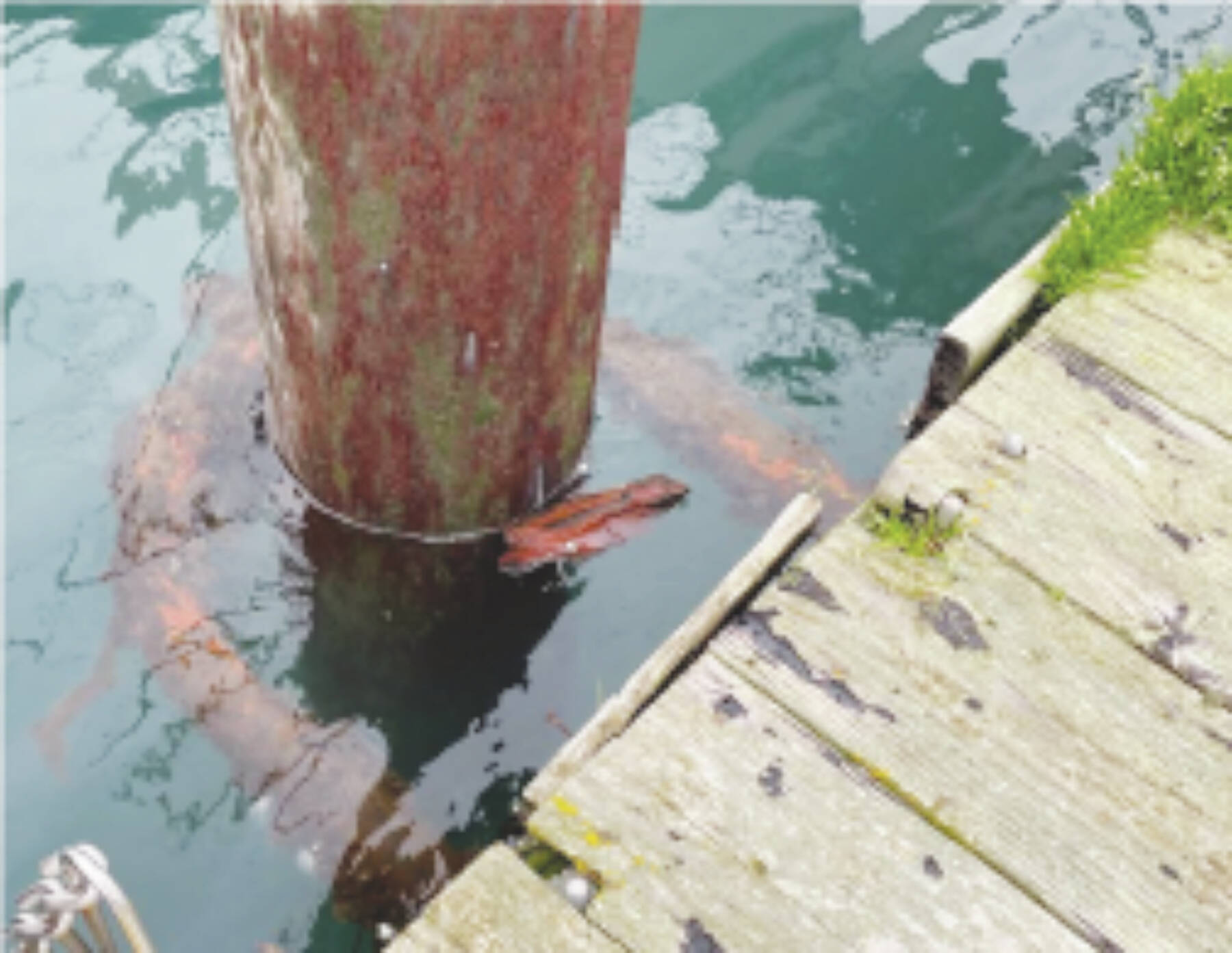The Homer City Council last month passed a resolution supporting Homer Port and Harbor’s application to the U.S. Department of Transportation’s Maritime Administration for federal funding to help replace failing float systems within the harbor.
Homer qualifications for federal funding
According to press release issued on April 22 from the city, the Maritime Administration funding would be targeted to support freight, seafood businesses and disadvantaged communities.
“Homer Port and Harbor is a central hub for supply chains within Alaska and between Alaska, the US mainland, and Asia. Alaskans who live and work in dozens of Alaska Native villages, freight shipped through Anchorage, and some of the world’s largest fisheries depend on Homer’s float systems,” the release said. “Water taxis and landing craft deliver freight to non-road connected villages across the region; pilot crews guide vessels and tankers to the Don Young Port of Alaska; tenders transport supplies to Bristol Bay communities and fisheries, and Western Alaska commercial fishing vessels homeport in Homer.”
The harbor is currently operating at or above capacity, according to its website. “Demand for moorage and regional freight movement has increased such that the harbor already cannot meet load bearing and system demands.”
The press release also adds a comment from Homer Mayor Ken Castner.
“We are grateful for the backing of U.S. Senator Murkowski, Senator Sullivan and Representative Peltola who supported the project last year. Their endorsement of the Bipartisan Infrastructure Law has created this once-in-a-generation funding opportunity to invest in regionally significant infrastructure so important for Alaska.”
Harbor float replacement priorities
On May 2, Homer Harbor Master Bryan Hawkins described to the Homer News the float situation in the harbor in more detail.
According to a U.S. Army Corps of Engineers environmental assessment document from August 2007, the Homer Small Boat Harbor was constructed in 1961 and later expanded in 1971. In 1985 a harbor expansion project enlarged the harbor to a total of 50 acres. The small boat harbor provides sheltered moorage for 1,420 vessels (920 permanent and 500 transient).
Hawkins said that some of the work conducted in the past are again due for assessment and replacement.
Hawkins said there are three prioritized sections of the harbor that are under consideration for replacement depending on funding provided. A harbor map showing the current float system layout and identification titles are available on the city website at https://www.cityofhomer-ak.gov/port/reserved-moorage.
The first priority is System 4, the section of the harbor directly below the current harbor master office. In 2015, floats HH and JJ were replaced.
“The rest of System 4 are floats originally placed in the harbor in 1964; they were previously located below the old harbor master’s office and when we received funding for an upgrade there, we took those floats and stabbed them in here,” he said, referring to a harbor map showing System 4. “These floats are part of the original harbor system and they really show it.”
FF float is an exception. In 2002 the harbor replaced that one.
AA is the main walk float for that component of the harbor and plans include extending the float down a little farther and increasing spacing in CC and DD.
The final piece of that restructuring will be to replace Ramp 6 with a 100-foot covered ramp, Hawkins said. Hawkins noted that the wood material of the current system is detrimental to the pilings and last winter, during the ice season, one of the floats was destroyed.
“Maintenance was able to secure a new one, so we didn’t lose those stalls. In fact, they replaced 18 different finger floats throughout the harbor over the past year. That means there are 36 boats that still have stalls that could have lost them because the floats were breaking down so much,” he said.
The second priority location for replacement is on the west side of the harbor along the main A walkway. In 2002, floats E, F, G and H were replaced and in 2015, J, A-K and R and S were replaced. If the 2024 funding application provides, the next section replacement will be K-Q. The A walkway float and Ramp 4 will be replaced and provided with a cover.
The third section, will be floats B, C and D and the intention to extend A float, the main walkway, to Ramp 2.
Hawkins described some variations regarding the engineering component of float material and said they are interested in removing all of the concrete within the current harbor float system.
“These concrete floats are breaking down to the point where the concrete is falling off the bottom of them; water is intruding into the Styrofoam and they’re actually sinking,” he said.
Once the condition of the floats is this poor, there is not much reconstruction maintenance that can be provided because of the water intrusion.
“Concrete floats in Homer, Alaska, are really not the best solution. The freeze and thaw that we get and the ice structure we see here creates a chaffing to the concrete and that contributes to the water intrusion. We’ve resurfaced and provided sealant to quite a few of the floats but at a certain point the concrete just turns into gravel and then that needs to be addressed as well,” he said.
Hawkins said his recommendation for the new floats is to use wood composition, instead of concrete.
“There are a few manufacturers that I have my eye on. The floats available now are just entirely different from what we would have used in the 1960s. The technology has changed a lot,” he said.
The underside of these floats would be composed of polystyrene, a liquid hydrocarbon commercially manufactured from petroleum.
If received, Marine Administration funds will be partially matched by the City of Homer at approximately 20% of the project cost. The Port and Harbor has also applied to the Denali Commission for financial support for the float upgrades, the press release states.



